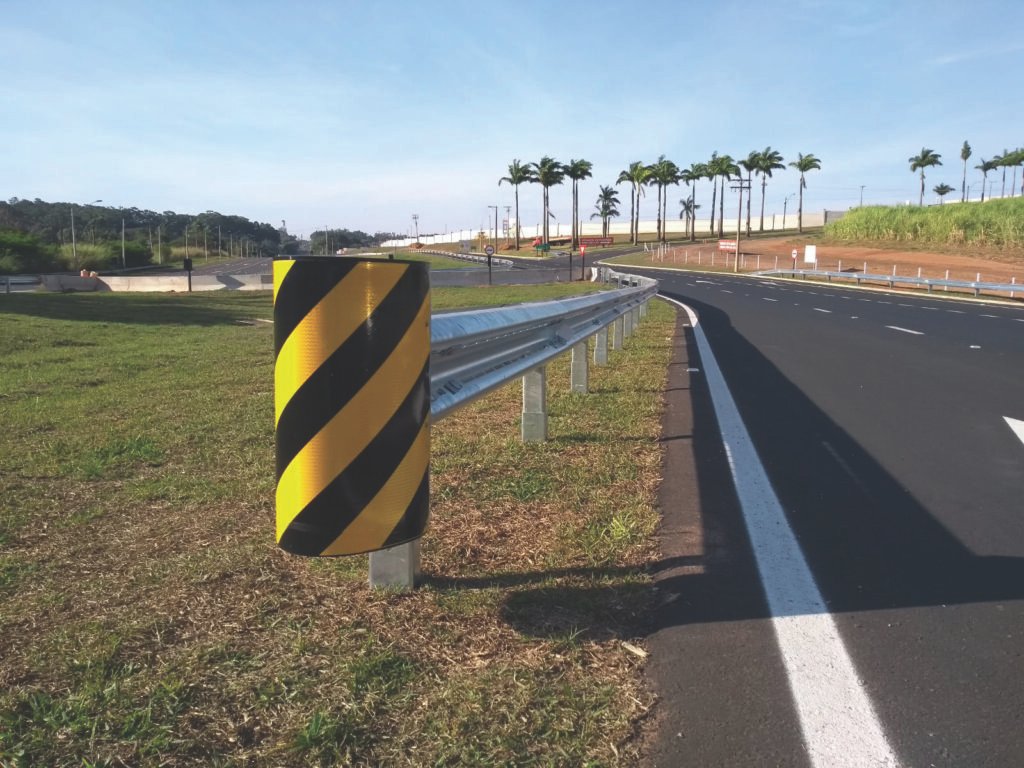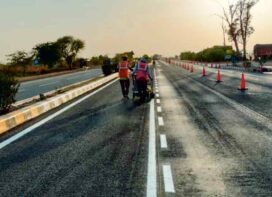 The design purpose of safety barriers installed on roads is to contain and redirect errant vehicles that either leave the carriageway or are likely to encroach into the path of oncoming vehicles. Using “conventional” solutions in the treatment of a safety barrier is not a good solution, says Diego Santiago González, Engineering Director, ROAD STEEL ENGINEERING, Asturias, SPAIN
The design purpose of safety barriers installed on roads is to contain and redirect errant vehicles that either leave the carriageway or are likely to encroach into the path of oncoming vehicles. Using “conventional” solutions in the treatment of a safety barrier is not a good solution, says Diego Santiago González, Engineering Director, ROAD STEEL ENGINEERING, Asturias, SPAIN
European standard EN 1317-2 deals with the impact performance of a safety barrier. However, difficulties arise in providing adequate safe terminations to the barrier. Consequently, terminals, which are defined as the beginning and/or end treatment of a safety barrier, are required to have specified impact performances. A terminal provides a smooth transition from no containment to the containment of the barrier, without introducing additional hazard for head-on impacts.
- Abrupt terminals are a typical solution for this topic, but they don’t provide any anchorage to the guardrail and moreover they suppose a serious risk in case of a frontal impact against it.
- End down ramp terminals provide anchorage to the terminal, but they also suppose a risk of flying or upset.
For these reasons, using crash tested energy absorption terminals is the best solution for both, anchoring the guardrail and avoiding any risk for the users of the road. The European standard ENV 1317-4 (& the new EN 1317-7) define the tests that should be performed to an energy absorption terminal. According to them, there are 4 performance classes (P1, P2, P3 & P4), depending on the number of tests and the mass and the speed of the vehicles used in the tests. The best performance is given by the P4 ones, and for them, 4 trajectories (6 with the new standard one) are defined: Trajectories 3 and 6 are not part of ENV 1317-4, they are additions and are part of the EN 1317-7 standard.

Depending on the performance of the energy absorption terminal during the tests, some parameters are measured and registered into the test report. These parameters are the following:
- Impact severity: This parameter provides the information about the risk for the occupants of the vehicle in case of an impact. The less severity (class A) the best performance. If the severity of the safety barrier is A, the performance of the energy absorption terminal should be also A to maintain the same security level.
- Lateral deflection: This parameter provides the information about the deformation of the terminal in both sides, towards the road (X parameter), and towards outside the road (Y parameter). These two parameters are very important because the first one (X) gives us the information of the distance that should be between the terminal and any hazard, and the second one (Y) gives us the information of the risk of incoming traffic interference. The less deformation parameters (X1, Y1) the best performance of the energy absorption terminal.
- Exit box class: It is not allowed that the vehicle turn over inside the exit box during neither after the test & if the trajectory of the vehicle is out of the exit box, the test is not valid. As smaller is the exit box, as better is the test, because the risk of invasion of the wrong lane is lesser as lesser is the exit box.
As a summary, considering all the characteristics exposed above, the best performance of an energy absorption system is the one given by a P4 X1Y1Z1 Severity class A, so this should be the selected one if possible.
The TAE H-110 M energy absorption terminal is an example of these products.
 TrafficInfraTech Magazine Linking People Places & Progress
TrafficInfraTech Magazine Linking People Places & Progress


